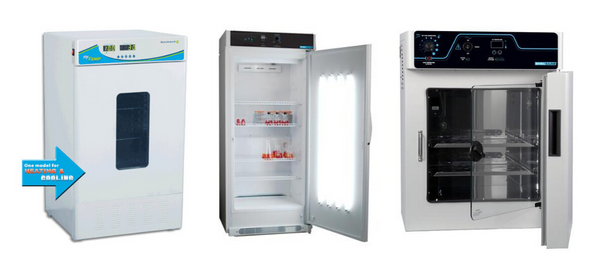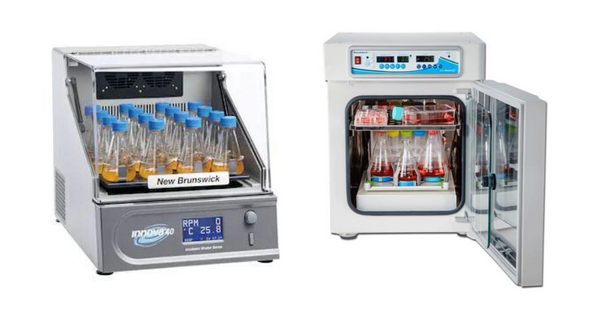For certain applications, such as promoting cell culture growth, you need to apply both heat and a shaking action to your sample, to create an optimal environment. Incubated shakers are designed specifically for this task. However, there is another option that can achieve a similar effect. Using a non-incubated shaker inside an incubator will enable you to apply heat to your sample while shaking it.
While the setup is simple in theory, there are a few factor to consider:
- Operating temperature and humidity ranges
- Spacing and dimensions
- Internal power requirements
In this post, we'll take a look at these factors in detail.
1. Operating Temperature and Humidity Ranges
Most shakers can be used in regular, non-humidified incubators, provided the temperature is between 4–40°C. However, when it comes to CO2 incubators and those that provide environments with extreme temperature and high humidity, you can't simply put any orbital shaker inside. Some orbital shakers are specially designed to work in warm, humid environments, although it’s important to note their limits in terms of temperature and humidity.
Here are some examples of shakers you can use inside an incubator and the environments they are suitable for:
- Benchmark Scientific Orbi-Shaker™ CO2: This model can be used in CO2 incubators. It withstands temperatures between 0–60°C and can handle humidity levels up to 100 percent.
- Ohaus Extreme Environment Shaker: This shaker is suitable for use in similar environments to the Benchmark model but withstands temperatures as low as -10°C.
- LabStrong Helix 150 BLR: This unit can be used in CO2 incubators with a temperature range of 2–40°C and humidity of up to 85 percent (non-condensing).

These units come with a remote controller to allow for external control of settings. This means you can adjust the shaker settings without having to open the incubator door. Note that for these models, the incubator does not need to have an internal power source. Power is provided to the shaking platform via a thin cable that’s connected to the external control panel. The panel is connected to an external outlet and the cable is thin enough that it doesn’t break the door seal of the incubator.
2. Spacing and Dimensions
Another important consideration when choosing a shaker is the amount of space you’ll need inside the incubator. Aside from having enough room to fit the shaker itself, you need to account for additional clearance to accommodate the orbit of the platform.
For example, the Ohaus Extreme Environment Shaker has an orbital diameter of 19 mm, so you need at least this amount of clearance around the shaker.
3. Internal Power Requirements
If you’re planning to use an orbital shaker inside an incubator, you need to ensure your incubator has an internal power supply (if needed). If you’re shopping for a new incubator, consider opting for one with an internal outlet, such as the MyTemp Digital Incubator, the SRI Diurnal Plant Growth Incubator, or the SMI Digital Microbio Laboratory Incubators.

Left to right: An MyTemp Digital Incubator, an SRI Diurnal Plant Growth Incubator, and an SMI Digital Microbio Laboratory Incubator.
Alternative: Use an Incubated Shaker
Of course, for incubated shaking, you don’t need to use an orbital shaker inside an incubator. Instead, you can opt for an incubated shaker. Aside from offering convenience, these take up less space relative to using an incubator with a shaker inside.
Some incubated shakers can also give you higher or lower temperatures than a regular shaker could withstand. For example, the New Brunswick™ Innova® 40 Series will go up to 80°C and the Benchmark Scientific Incu-Shaker™ 10LR can go down to 15°C below ambient.
There are also CO2 incubated shakers available, including the Incu-Shaker CO2 Mini and New Brunswick™ S41i.

Left to right: A New Brunswick™ Innova® 40 Series and an Incu-Shaker CO2 Mini.
